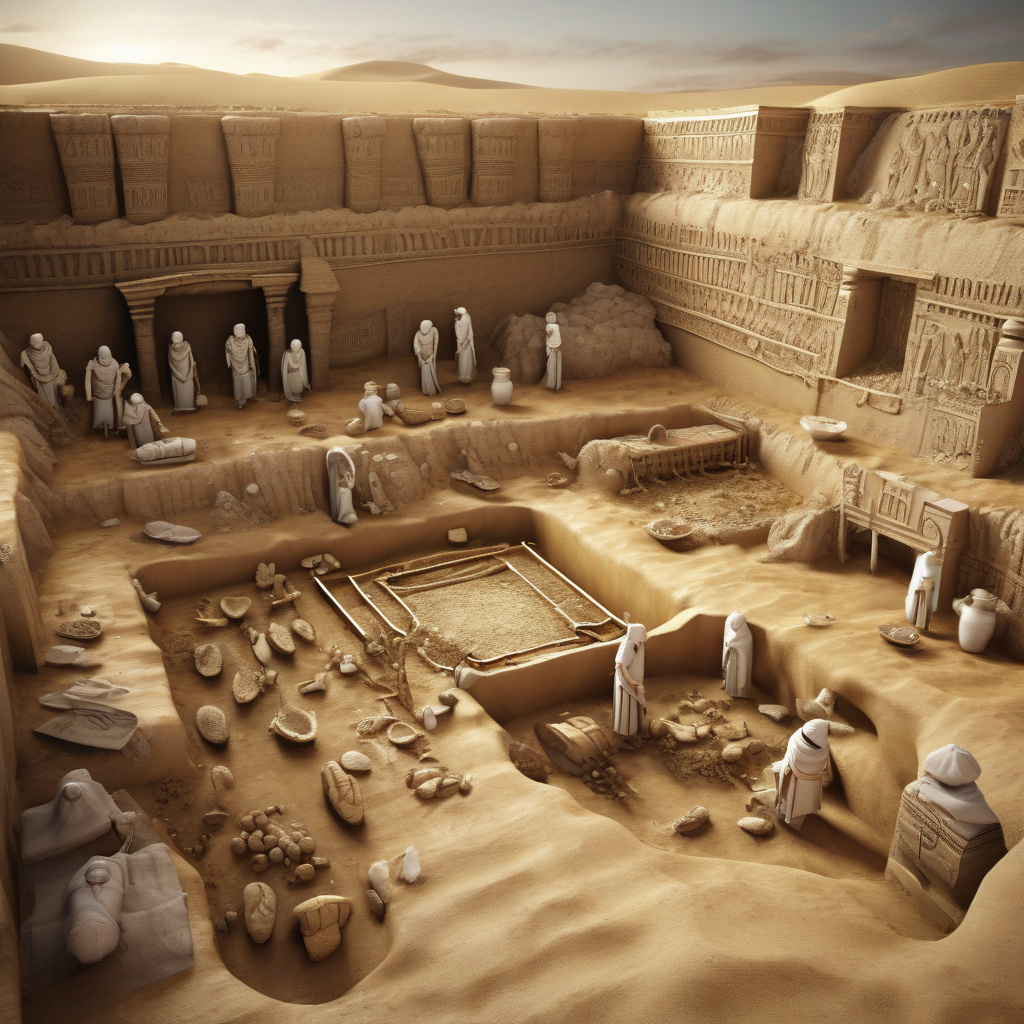2,800-Year-Old Grave of King Midas’s Relative Found with Over 100 Artifacts
At the legendary city of Gordion, once the seat of King Midas’s dynasty, archaeologists have made a groundbreaking discovery that sheds new light on the ancient civilization that thrived in the heart of modern-day Turkey. The 2,800-year-old grave of a relative of King Midas has been unearthed, revealing a treasure trove of over 100 artifacts that offer a glimpse into the opulent lifestyle and rich cultural heritage of the Phrygian kingdom.
Among the artifacts found in the grave are intricately crafted jewelry, pottery, and weapons, all of which speak to the advanced artistic skills and craftsmanship of the Phrygian people. The discovery of such a well-preserved grave not only provides valuable insights into the material culture of the time but also raises intriguing questions about the social hierarchy, religious beliefs, and funerary practices of the ancient Phrygians.
One of the most striking finds in the grave is a golden brooch in the shape of a Griffin, a mythical creature that was often associated with royalty and power in ancient Phrygian iconography. This exquisite piece of jewelry not only showcases the artistic sophistication of the Phrygian artisans but also hints at the symbolic significance of mythological creatures in their cultural and religious beliefs.
In addition to the precious artifacts found in the grave, archaeologists have also uncovered human remains, which are currently undergoing DNA analysis to determine the genetic relationship between the deceased individual and King Midas himself. This scientific investigation holds the promise of confirming the identity of the tomb’s occupant and unlocking the secrets of King Midas’s royal lineage.
The discovery of this ancient grave is a testament to the enduring fascination with the legendary King Midas and the civilization he ruled over. By unearthing such a wealth of artifacts and historical evidence, archaeologists are not only piecing together the puzzle of the past but also inviting us to reflect on the parallels between the ancient Phrygian world and our own modern societies.
As we marvel at the intricate craftsmanship of the Phrygian artifacts and contemplate the mysteries of King Midas’s dynasty, we are reminded of the timeless allure of archaeology and the power of historical discoveries to enrich our understanding of the world around us. The 2,800-year-old grave of King Midas’s relative stands as a poignant reminder of the enduring legacy of ancient civilizations and the importance of preserving and studying our shared cultural heritage.
In conclusion, the excavation of the 2,800-year-old grave at Gordion represents a significant milestone in the field of archaeology, offering a rare glimpse into the world of King Midas and the Phrygian kingdom. With each new artifact unearthed, we come one step closer to unraveling the mysteries of the past and connecting with the rich tapestry of human history that lies buried beneath the sands of time.
archaeology, KingMidas, ancientcivilizations, culturalheritage, historicaldiscovery










